
Giovanni Battista Tiepolo, also known as GiambattistaTiepolo, was an Italian painter and printmaker from the Republic of Venice who painted in the Rococo style, considered an important member of the 18th-century Venetian school. He was prolific, and worked not only in Italy, but also in Germany and Spain.

Lorenzo Lotto was an Italian Renaissance painter, draughtsman, and illustrator, traditionally placed in the Venetian school, though much of his career was spent in other north Italian cities. He painted mainly altarpieces, religious subjects and portraits. He was active during the High Renaissance and the first half of the Mannerist period, but his work maintained a generally similar High Renaissance style throughout his career, although his nervous and eccentric posings and distortions represented a transitional stage to the Florentine and Roman Mannerists.
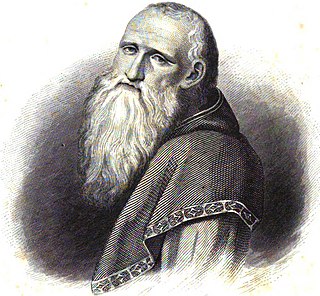
Bernardino Luini was a north Italian painter from Leonardo's circle during the High Renaissance. Both Luini and Giovanni Antonio Boltraffio were said to have worked with Leonardo directly; he was described as having taken "as much from Leonardo as his native roots enabled him to comprehend". Consequently, many of his works were attributed to Leonardo. He was known especially for his graceful female figures with elongated eyes, called Luinesque by Vladimir Nabokov.
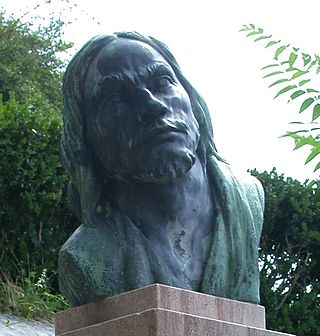
Pordenone, Il Pordenone in Italian, is the byname of Giovanni Antonio de’ Sacchis, an Italian Mannerist painter, loosely of the Venetian school. Vasari, his main biographer, wrongly identifies him as Giovanni Antonio Licinio. He painted in several cities in northern Italy "with speed, vigor, and deliberate coarseness of expression and execution—intended to shock".

Antonio Vassilacchi, also called L'Aliense, was a Greek painter, who was active mostly in Venice and the Veneto.

Valdobbiadene is a town and comune (municipality) in the province of Treviso, Veneto, Italy. Valdobbiadene is a wine growing area: located below the Alpine-Dolomite areas of Veneto, the climate allows the cultivation of the Glera variety of grape.

Francesco Trevisani was an Italian painter, active in the period called either early Rococo or late Baroque (barochetto).

Lodovico Giovanni Manin was a Venetian politician, patrician, and the 120th and last Doge of Venice. He governed the Venetian Republic from 9 March 1789 until its fall in 1797, when he was forced to abdicate by Napoleon Bonaparte.

Cesare Nebbia (c.1536–c.1614) was an Italian Mannerist painter from Orvieto.

Giuseppe Bartolomeo Chiari, also known as simply Giuseppe Chiari, was an Italian painter of the late-Baroque period, active mostly in Rome.
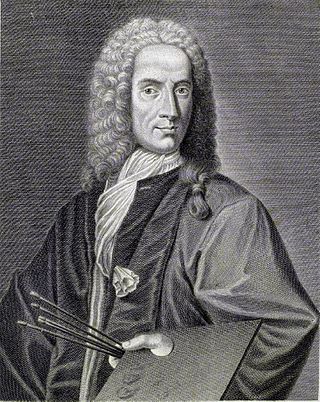
Antonio Zanchi was an Italian painter of the Baroque, active mainly in Venice, but his prolific works can also be seen in Padova, Treviso, Rovigo, Verona, Vicenza, Loreto, Brescia, Milano, and Bergamo, as well as Bavaria.

Andrea Vicentino was an Italian painter of the late-Renaissance or Mannerist period. He was a pupil of the painter Giovanni Battista Maganza. Born in Vicenza, he was also known as Andrea Michieli or Michelli. He moved to Venice in the mid-1570s and registered in the Fraglia or guild of Venetian painters in 1583. He worked alongside Tintoretto at the Palazzo Ducale in Venice, helping paint The Arrival of Henry III at Venice at the Sala delle Quattro Porte as well as works in the Sala del Senato and the Sala dello Scrutinio. He also painted the altarpiece Madonna of the Rosary for the Treviso Cathedral, God the Father with Three Theological Virtues (1598) for the church in Gambara, and St Charles Borromeo for a church in Mestre. Paintings by him exist in a number of galleries including the Raising of Lazarus at the National Museum of Fine Arts, Malta.

Giovanni Maria Morandi was an Italian Baroque painter, known for altarpieces and portraits.
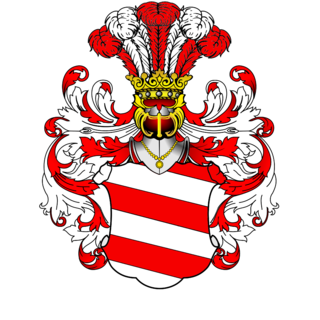
The House of Pola is an Italian noble family currently living in the Czech Republic. The origins of the House of Pola date back at least until 990. The name of the family refers to the town of Pula in Istria County, Croatia, which was in their possession from 1271 until 1331.
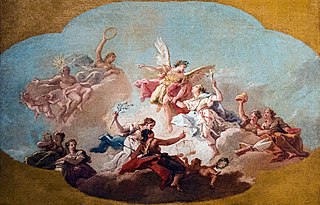
Jacopo Guarana was a Venetian painter of the late Baroque period who was born in Verona. He was active mainly in Venice and its mainland territories.

Pellegrino II was Patriarch of Aquileia in northern Italy from 1195 to 1204.
Giovanni Battista Canal or Canale was an Italian painter of the late Baroque and early Neoclassical era, active mainly depicting history and sacred subjects in his native Venice.

Antonio Marinetti, also called il Chiozzotro was an Italian painter, active in a late-Baroque style.
Domenico Mancini was an Italian painter of the Venetian mainland, painting in a High Renaissance style. Mancini was either a pupil or a close follower of Giorgione and Giovanni Bellini. He is said to have worked alongside Pietro Maria Pennacchi.

Andrea da Murano, also known as Andrea di Giovanni was an Italian painter, active mainly in Venice and the Venetian mainland.



















